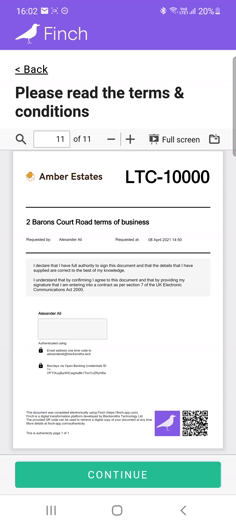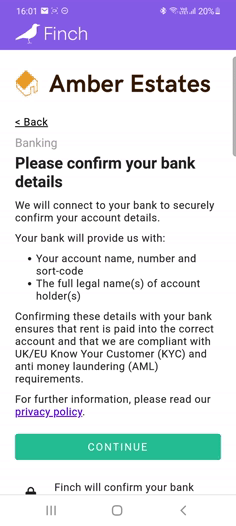Foreword
A couple of weeks ago I published an article, where I discussed the top 5 reasons why using Electronic Signatures (E-Sigs) in your property business can make document processing a breeze. If you haven’t yet decided to use an E-Sigs platform, I’d recommend giving it a read before continuing with this article.
The main event
In this week’s article, I want to focus on supporting the ~70% (according to our latest survey of 200+ ARLA members) of property businesses that have already chosen to use an E-Sigs platform. Just because a majority of the industry has upgraded their document signing process to digital ones doesn’t mean that those businesses have necessarily chosen the right platform for their use case, and certainly doesn’t guarantee that the technology has been properly integrated into their daily processes.
Therefore, let’s discuss some of the drawbacks of the market-dominating major platforms, and some considerations that your business may want to take into account when next renewing your subscription with them.
What and who to look out for in the Electronic Signing space
The subscription based E-Sigs market hasn’t been around all that long, but there are dozens of solutions out there, each with their own spin on essentially the same product. Choosing which to go for can be a bit of a minefield, but the most important criteria to look out for (in my opinion) are; user interface, automation capabilities, reliability of service, and pricing model.
Climbing to the top of the pile are a few names that have dominated the market and gained the business of many property giants; DocuSign, Adobe Sign, Panda Doc, and Sign Easy. All for good reason, they’re strong tools that can solve the basic problem of moving paper documents to digital ones. However, regardless of the provider you choose to service your document signing needs, there is a common thread of issues that plague the industry and its incumbents today…
3 drawbacks of Electronic Signing with the major brands
I strongly believe that many E-Sig platform customers have put up with the following issues because they either; (1) Have managed to find work-arounds that effectively unravel many of the initial efficiency gains found when moving from paper signatures to E-Signatures, or (2) Simply don’t know that there are other options out there, and have stuck with what they know whilst the E-Sigs proposition has progressed significantly around their chosen solution.
Here’s the 3 drawbacks as I see them:
1. Lack of high-quality integrations and raw data capture
The DocuSigns of this world are building a brand in their own right, and therefore have a vested interest in promoting their platform whenever an envelope is sent for signing. This means that your customers will often need to interact with ‘the DocuSign platform’ as a separate process to the rest of your customer journey, and that can cause confusion, frustration, and a watering-down of the customer experience you are trying to offer.
In our research, and through conversation with our property industry clients, we’ve also found that most E-Sig solutions don’t play well with other systems (in tech terms – their API isn’t easy to work with). This means that 2-way integrations are challenging to build, and therefore the delivery of the underlying field data back into your CRM isn’t always possible. In many cases, the only data points provided to you as a customer is the signed document itself, and the interaction history. Typically, API access is also charged in addition to the platform costs too.
But what if we also want to grab the raw data points that were inserted or changed within the document by the recipient? Electronic signing platforms are wholly focused on “the envelope”, and only have a generic interest in the underlying data in order to execute that document signature – they lack an understanding of the context of the business transaction occurring.
The Finch response
We believe in putting your brand first by using digital processes that are defined by you, and that your customers’ experience should be as simple and frictionless as possible. To that end, we can integrate Finch into your existing systems and processes so that your customer uses only one platform from end-to-end to provide data and sign documents.
Our platform is customisable not only in terms of the way in which the workflow is presented, but also in terms of the branding used (so it appears to be an extension of your current system). We also ensure that every piece of data provided along the way is stored as a raw data point, ready to be ported back into your CRM or central IT systems for analysis and compliance purposes via seamless integrations.
2. Lack of ability to merge docs ‘on the fly’
Currently in most E-Sig platforms, the electronic document is just that – an electronic version of the previously paper-based document. This means that the initial data, that which is already known to the agent, is filled in and assumed as correct. They will also mark out areas of the document (fields) in which the recipient/customer can fill in specific data.
But what if the recipient disagrees with the initial data pre-filled by the agent? Or the field data provided by the recipient would drive the selection (or deselection) of certain clauses of the document? As it stands in these situations, the document would need to be rejected, prepared a second time, and reissued with the corrections – all of which wastes precious time and frustrates both the agent and recipient. It also costs money every time a new envelope is sent, as most solutions charge on a per-document basis.
The Finch Response
We think that there are much more modern approaches to creating and signing an Electronic Document. Just because the data will end up in a traditional PDF format doesn’t mean it needs to be filled and executed in that format on the screen, so we use our data capture workflows (a series of configurable questions), the answers to which to drive the data that subsequently appears in the document for signature. Therefore, if your customer answers ‘No’ to the question “Would you like to subscribe to our rent protection service?”, then the clauses relating to rent protection will simply be removed and replaced with a simple statement of non-provision.
We also allow documents to effectively be issued partially complete, with the ownness on the recipient to provide specific data fields. This offers huge time-saving benefits to both the sender and the recipient, cutting out the back and forth of email communications and eliminating 90% of the issues that typically cause the cancellation, correction, and re-issue of electronic documents. It also avoids the transactional cost of re-issuing, as a cancelled envelope is still charged for by all E-Sig platforms.
3. Lack of pricing model transparency
Using DocuSign as a prime example, they have multiple tiers to which a user can subscribe; Personal, Standard, Business Pro, and Advanced. Each of these come with a set number of envelopes which can be issued per month, and varying features and service levels. But what if you want to send a low volume of documents (say 5 per month), and take advantage of some of the more advanced automation and branding options? Well, your effective per-envelope cost can jump from £1.50 a document on the Personal plan to £4 per document on the Standard plan.
Beyond the transactional costs, there’s also the often overlooked resource costs on your IT team to get the system effectively integrated and working correctly, as well as getting the workforce trained on how to use it properly.
The Finch Response
Our pricing principle is simple – workflows will only ever cost a maximum of £1.30 per E-Sig document, and that’s if you were to use just 1 per month. As you send and receive more signed documents, your per-unit cost decreases as a thank-you for your loyalty. No hidden costs, no features being locked behind a certain type of subscription – you’ll get access to the same features and an independent 1-brand business as you would if you were the largest national agency.
On top of that, you can pay after usage and only pay for exactly what you use, so no more loss of credits at the end of the month because you had a slow period.
As part of our onboarding process when you sign up to Finch, your team will also receive full training on the solution. And due to the bespoke nature of how we build your workflows, it’s likely that your Finch E-Sig process will be very similar to your previous process, meaning staff can pick it up quickly and start using it on day one!
Want to find out more about how Finch is changing the E-Sigs game?
Our Electronic Signing functionality is, in our humble opinion, the next generation that will change the way that the DocuSigns, Adobe Signs, Panda Docs of this world will need to progress to keep ahead of the curve. If you’d like to see it in action, and understand how we could replace your existing supplier at a highly competitive rate, feel free to reach out to myself – tom.parker@finch-app.com
And as always, we welcome your thoughts and feedback over on our LinkedIn page.







